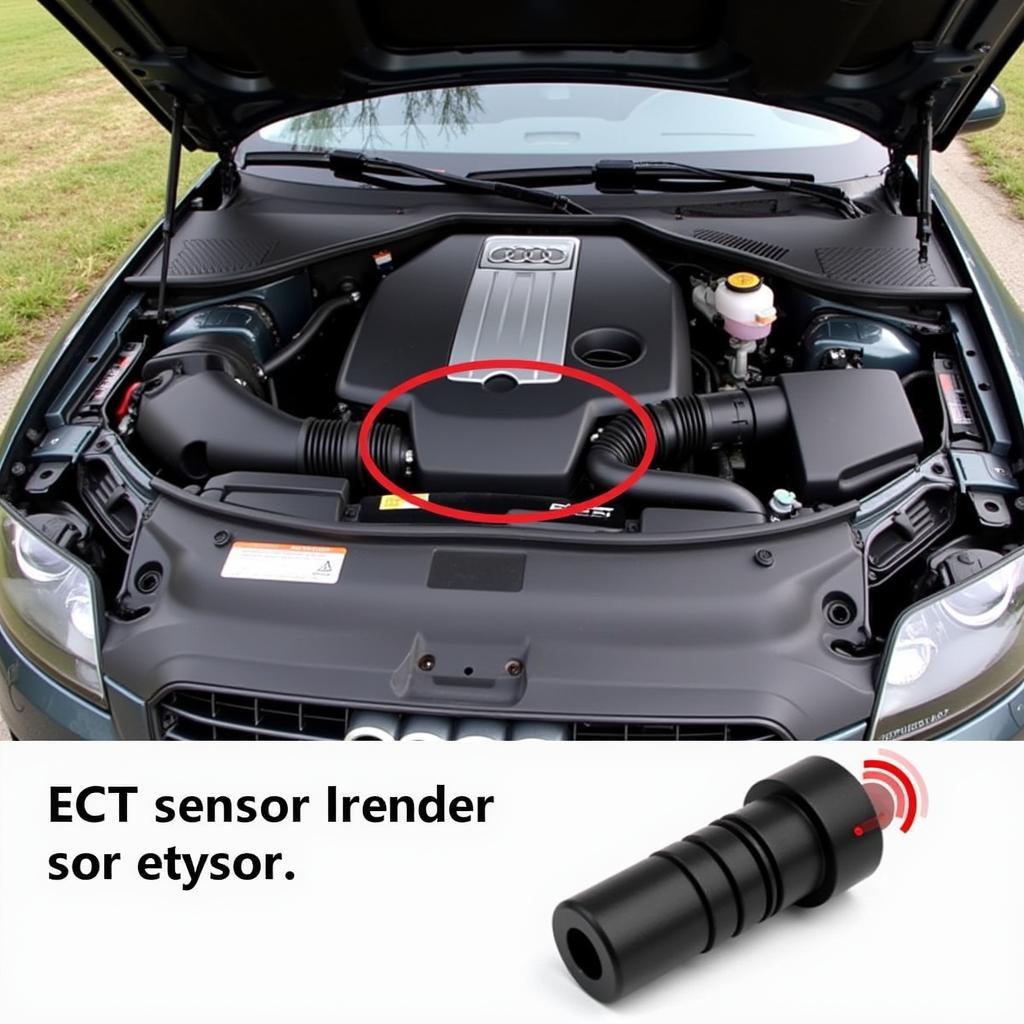Your cart is currently empty!

Decoding the Audi TT Code P0118: A Comprehensive Guide
The dreaded check engine light illuminates your Audi TT’s dashboard, and a quick scan reveals the cryptic code P0118. What does it mean, and how do you fix it? This guide dives deep into understanding and resolving the Audi TT code P0118, offering practical advice for car owners, mechanics, and automotive technicians. We’ll cover everything from diagnosing the problem to implementing effective solutions.
Understanding the P0118 code is crucial for maintaining the performance and longevity of your Audi TT. This code signifies a problem with the Engine Coolant Temperature (ECT) sensor circuit, specifically indicating a high input. Essentially, the car’s computer is receiving a signal suggesting the engine is overheating, even if it isn’t. For more information regarding other Audi codes, you can refer to resources like the audi code p2181.
What Causes the P0118 Code in an Audi TT?
Several factors can trigger the P0118 code in your Audi TT. These range from simple issues like a faulty sensor to more complex problems with the wiring or even the car’s computer.
- Faulty ECT Sensor: The most common culprit is a malfunctioning ECT sensor. This sensor is responsible for monitoring the engine’s temperature and relaying that information to the Engine Control Unit (ECU). A faulty sensor can send incorrect signals, leading to the P0118 code.
- Wiring Problems: Damaged or corroded wiring in the ECT sensor circuit can disrupt the signal transmission, causing the ECU to register a high input.
- Low Coolant Level: While not directly causing a sensor fault, low coolant levels can contribute to erratic temperature readings and potentially trigger the P0118 code.
- Faulty Thermostat: A stuck-closed thermostat can restrict coolant flow, leading to localized overheating and potentially triggering the code.
- ECU Issues: In rare cases, a problem with the ECU itself can cause it to misinterpret the signals from the ECT sensor.
 Audi TT Engine Bay Showing ECT Sensor Location
Audi TT Engine Bay Showing ECT Sensor Location
Diagnosing the P0118 Code
Proper diagnosis is key to efficiently resolving the P0118 code. Here’s a step-by-step guide:
- Retrieve the Code: Use an OBD-II scanner to confirm the P0118 code.
- Inspect the ECT Sensor: Visually check the sensor for damage, corrosion, or loose connections.
- Test the Sensor: Use a multimeter to test the sensor’s resistance and voltage output. Compare the readings with the manufacturer’s specifications.
- Check the Wiring: Inspect the wiring harness for any damage, breaks, or corrosion.
- Inspect the Coolant Level: Ensure the coolant level is within the recommended range.
 Inspecting the Wiring Harness of an Audi TT for Damage
Inspecting the Wiring Harness of an Audi TT for Damage
You might also find resources like the one addressing the 2004 audi diagnostic code p0118 helpful.
How to Fix the Audi TT Code P0118
Once you’ve diagnosed the cause of the P0118 code, you can proceed with the appropriate repair:
- Replace the ECT Sensor: If the sensor is faulty, replacement is the most common solution.
- Repair the Wiring: If the wiring is damaged, repair or replace the affected sections.
- Top up Coolant: If the coolant level is low, add coolant to the correct level.
- Replace the Thermostat: If the thermostat is faulty, replace it with a new one.
- Consult a Specialist: If the issue persists or if you suspect an ECU problem, consult a qualified Audi technician. They may have encountered similar issues like the p2181 code audi a4 and can offer expert advice.
 Replacing the ECT Sensor in an Audi TT
Replacing the ECT Sensor in an Audi TT
“Addressing the P0118 code promptly is crucial,” advises Robert Johnson, a seasoned automotive engineer. “Ignoring this issue could lead to further complications and potentially damage the engine.”
Why is it Important to Fix the P0118 Code?
Ignoring the P0118 code can have several negative consequences:
- Reduced Fuel Economy: The car’s computer may run the engine rich in an attempt to cool it down, leading to reduced fuel efficiency.
- Overheating: If the actual coolant temperature is high and the problem is not addressed, the engine could overheat, causing serious damage.
- Performance Issues: The car may experience reduced power and sluggish acceleration.
- Further Damage: Ignoring the issue can exacerbate existing problems and potentially lead to more costly repairs.
“A properly functioning ECT sensor is vital for optimal engine performance and fuel efficiency,” adds Maria Sanchez, a certified automotive technician. “Addressing this code ensures your Audi TT runs smoothly and efficiently.”
You might find valuable information related to similar issues in resources like the one discussing the 2004 audi a4 1.8t code p0118 p2181.
Conclusion
The Audi TT P0118 code, indicating a problem with the ECT sensor circuit, requires prompt attention. By understanding the causes, following the diagnostic steps, and implementing the correct solutions, you can restore your Audi TT to its peak performance and avoid potential long-term damage. We encourage you to connect with us at VCDSTOOL for further assistance. Contact us at +1 (641) 206-8880 and our email address: vcdstool@gmail.com or visit our office at 6719 W 70th Ave, Arvada, CO 80003, USA.
by
Tags:
Leave a Reply